cellular respiration: electron transport chain
1/14
Earn XP
Description and Tags
1/10/25
Name | Mastery | Learn | Test | Matching | Spaced |
|---|
No study sessions yet.
15 Terms
Electron transport chain overview
4th step of cellular respiration
Electron carriers loaded with electrons and protons (H+) from krebs cycle
Move to etc: chain like series of steps; staircase
Electrons move through stairs and drop downwards to next protein
Electrons move through redox reactions
Protons transferred to intermembrane space
Oxygen, very EN element, pulls electrons and protons in at bottom of stair case
Oxygen and proton becomes water
Occurs in inner membrane
Forms a total of 34 atp
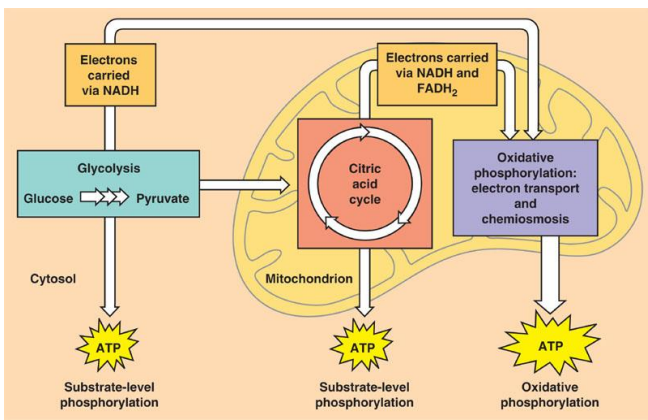
components of etc
Complex I
Complex II
Complex III
Complex IVCoQ and CytC are helper molecules
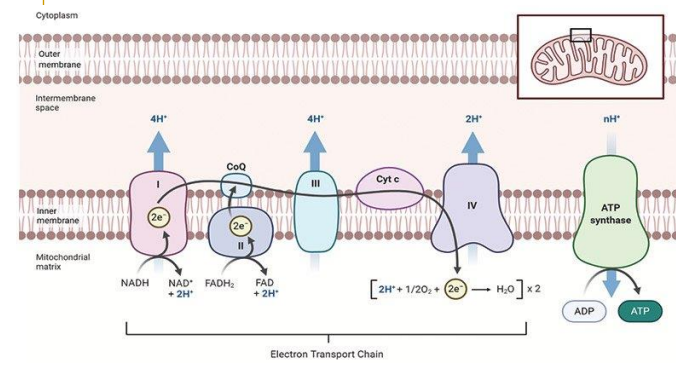
Complex I
NADH with potential energy is oxidated
Electrons are given away
Energy from electrons pumps protons into intermembrane space
4 H+ are transported per 2 electrons
One electron moves at a time; assembly line
Left over electrons moved by helper molecule to next complex
Theoretical: 1 NADH = 3 ATP
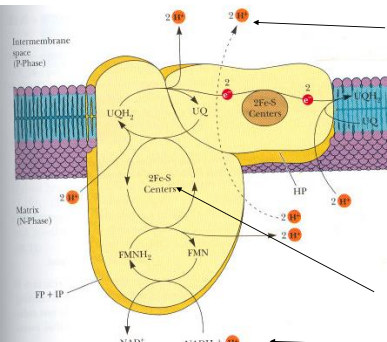
Complex II
Not transmembrane protein
FADH2 gives electrons
1 FADH2 makes 2 atp, not as efficient as NADH
Energy and electrons continue to be moved across
No protons pumped: oxidation of FADH2 isnt strong enough
FADH2 supplies more electrons to coQ so more oxygen is reduced to water
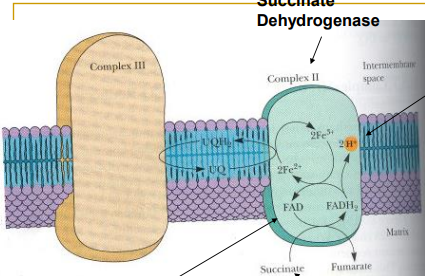
Complex III
Electrons and energy taken and pushed onwards
More H+ pumped into concentration gradient
4 protons pumped out per transfer of 4 electrons
two cycles required as CytC can only carry one electron at a time
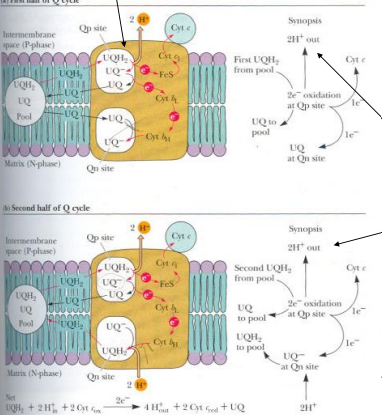
Complex IV
Oxygen at the bottom pulling electrons to bottom of staircase/etc
Oxygen is what allows etc to function
Last pump of protons into intermembrane space
Oxygen and proton forms water
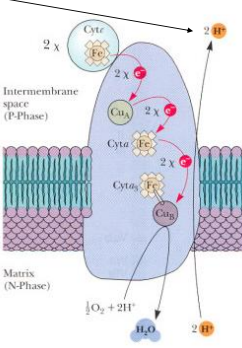
Complex functions summary
Complex I: NADH pumps protons
Complex II: FADH2 moved through to CoQ, no pumping protons
Complex III: pumps a lot more protons
Complex IV: last proton pump, water formed
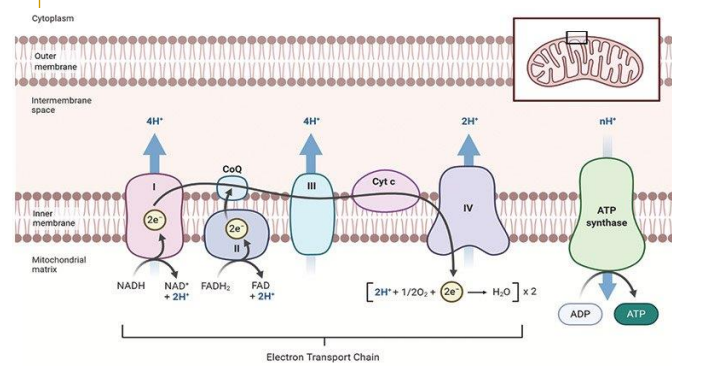
Atp produced from etc (etc tally)
Per one molecule glucose
2 NADH from glycolysis -> 6 ATP
2 NADH from Pyruvate oxidation -> 6 ATP
6 NADH from Krebs -> 18 ATP
2 FADH2 from Krebs -> 4 ATP
Total: 34 atp
Total atp yield across cellular respiration
Per one molecule glucose
2 ATP from Glycolysis
2 ATP from Krebs
34 ATP from ETC
Theoretical total yield: 38 atp
May be lower due to proton leaking out of intermembrane space, or free energy needed elsewhere before ATP is made
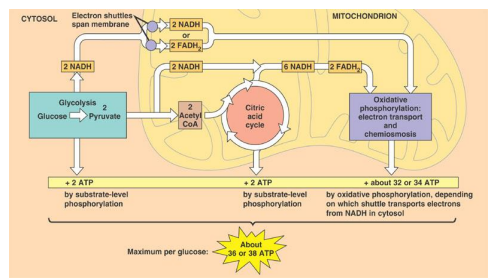
Atp synthase
transport protein and enzyme
after four complexes
Movement of electrons and protons through complex I to IV causes high concentration in intermembrane space
Protons flow through atp synthase through diffusion: high to low concentration
Atp synthase spins like a turbine and produces atp
Oxidative phosphorylation occurs: moving phosphate group indirectly through a chain of reaction
energy from spinning allows adp to bind to phosphate to make atp
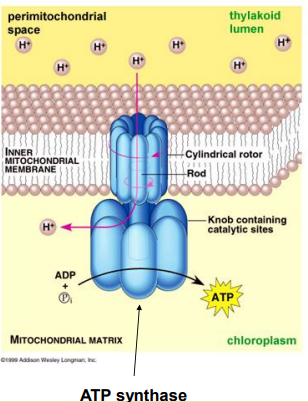
Why do we breathe oxygen
Oxygen is essential for the electron transport chain to function
Since it is high electronegativaty, it pulls protons and electrons through staircase
At complex IV, oxygen accepts electrons and protons to form water (waste product)
This allows the cycle to continue and more atp to be produced
Without atp our cells would die
Steps of etc
complex I
complex II
CoQ
Compelx III
CytoC
Complex IV
atp synthase
Why is mitochondria called the power house of the cell?
Primary site of cellular respiration
Atp is our body’s energy currency
Cellular respiration occurs outside of then inside of mitochondria
It is essential for atp to form
It powers our cells and us
Move electrons is the same as
Moving electricity which is why energy is created
chemiosmosis
process of ions move across semipermeable membrane through atp synthase
usually portons
release energy to drive cellular work
synthesis of atp